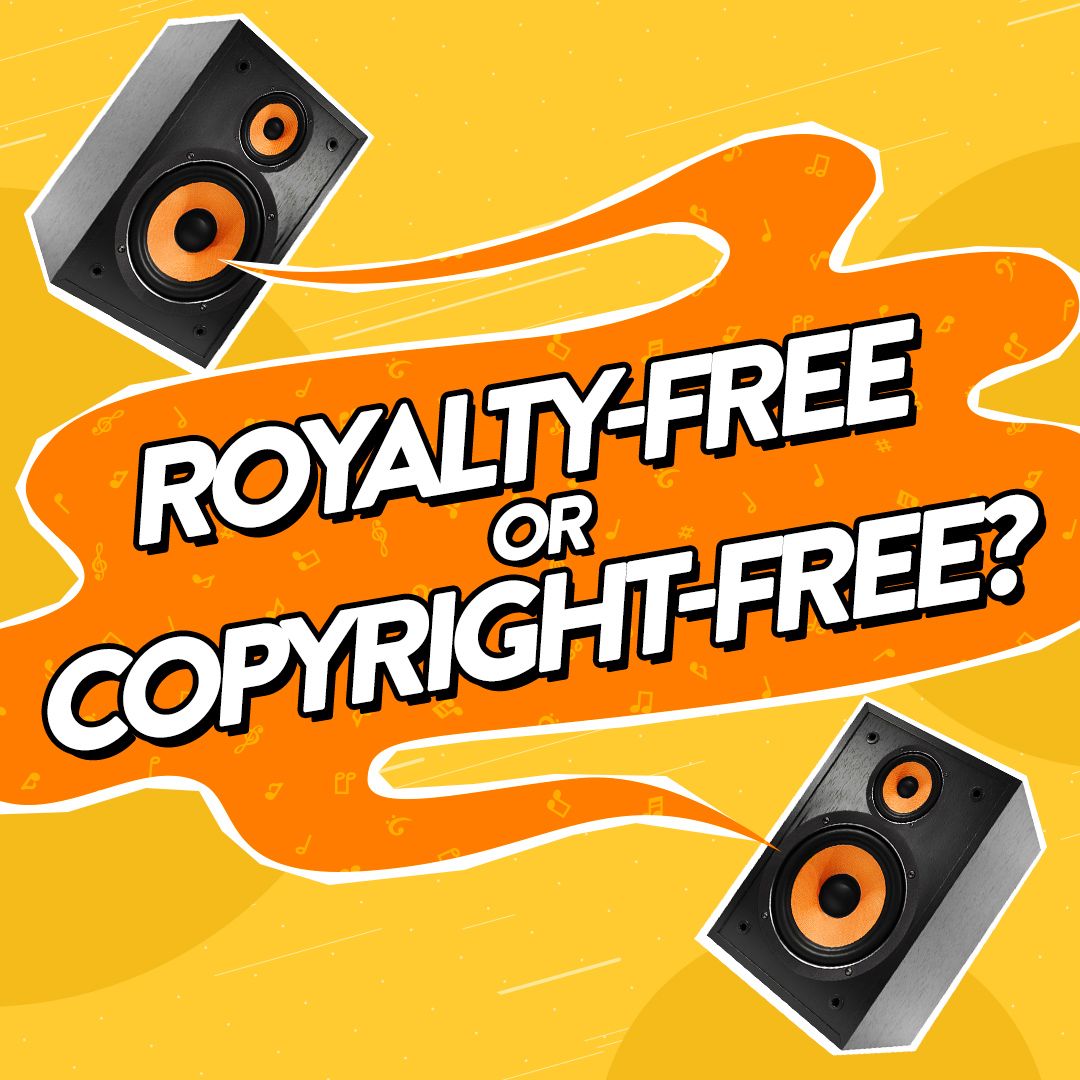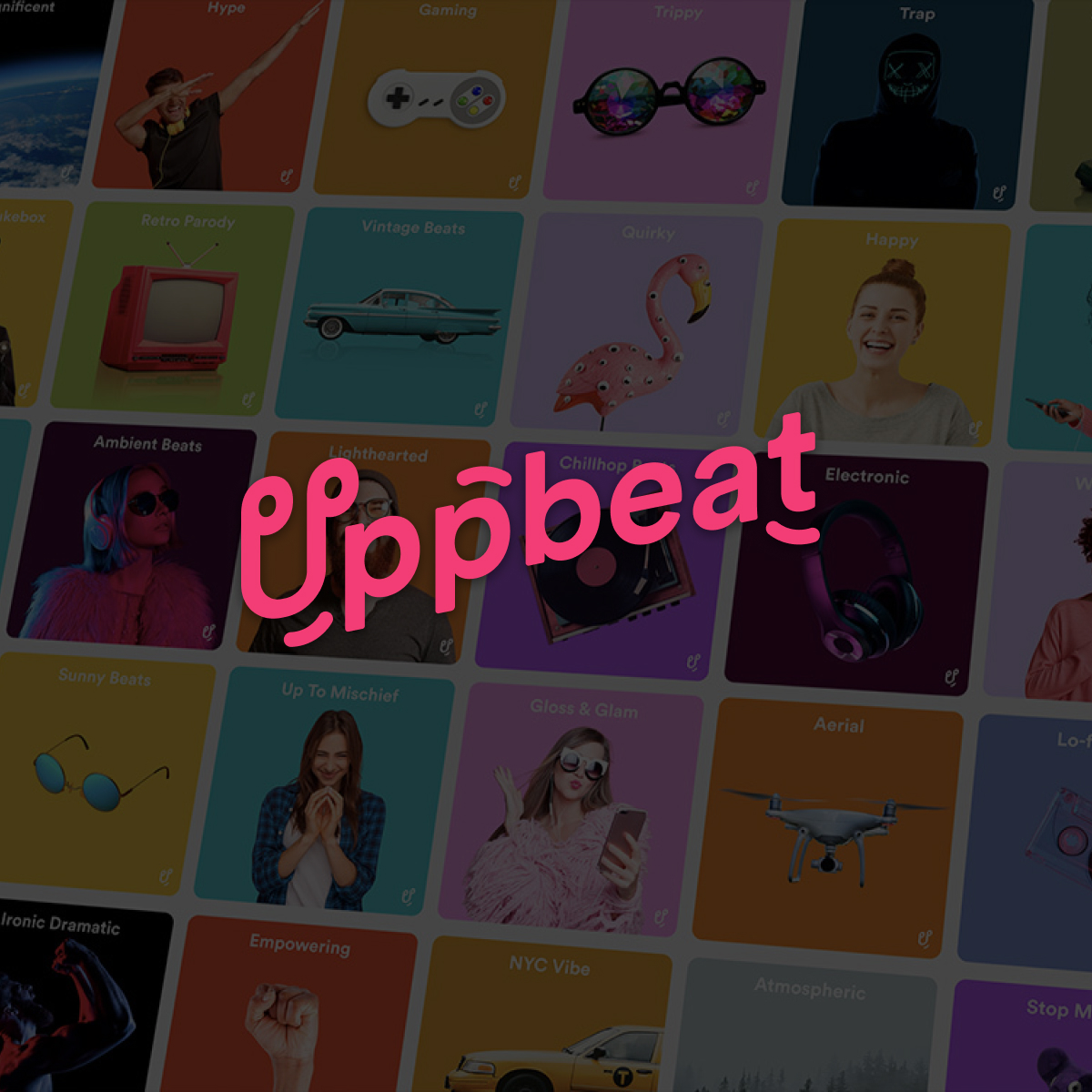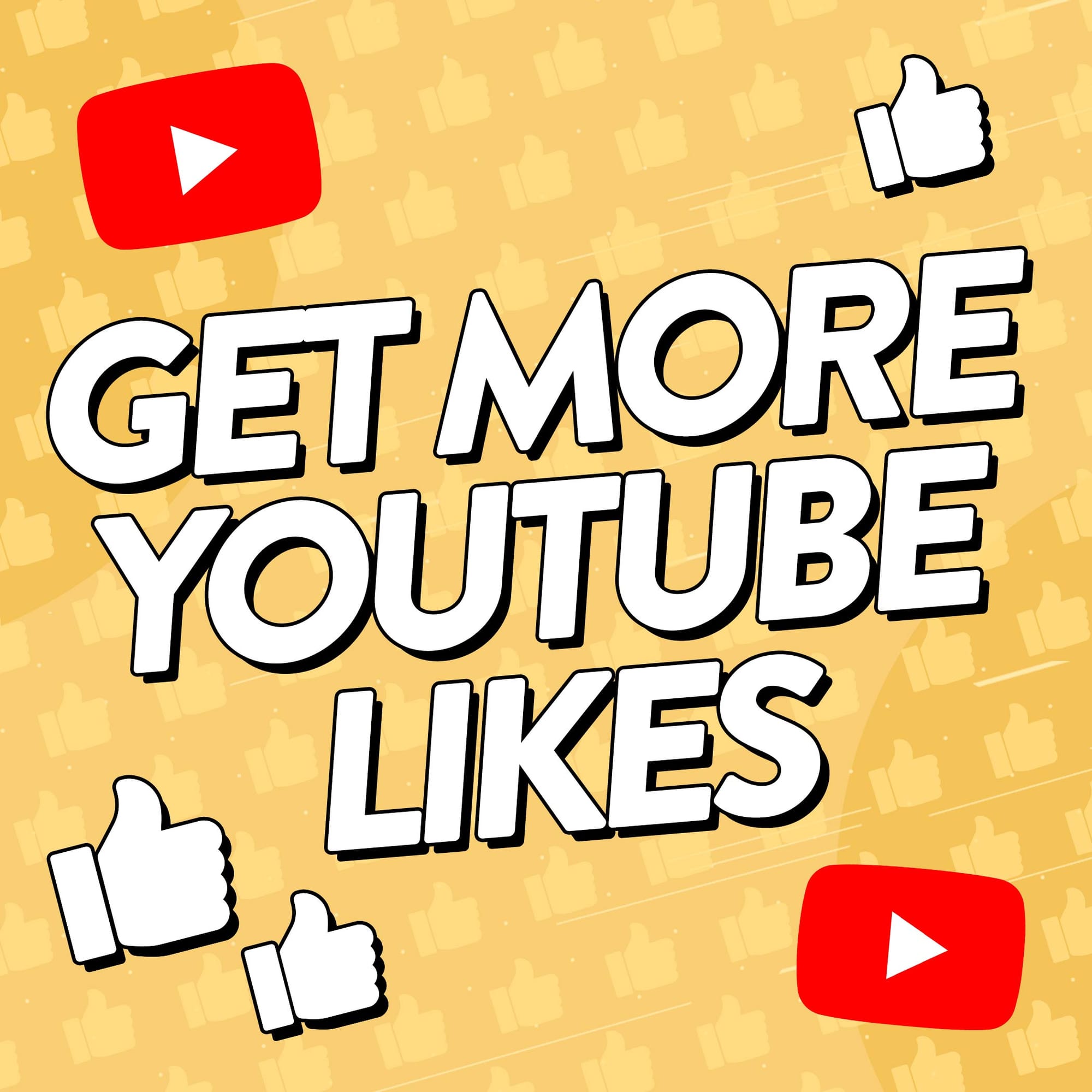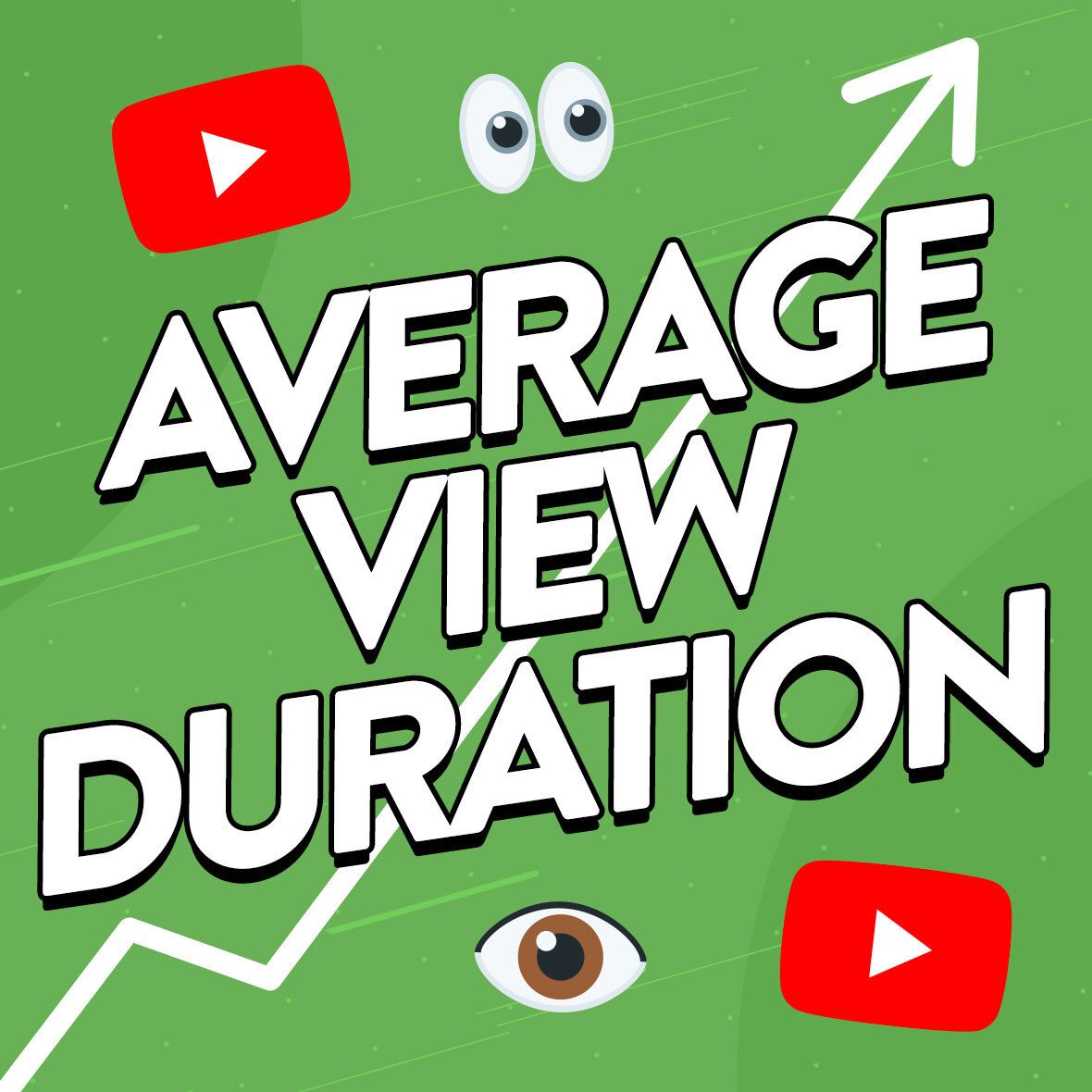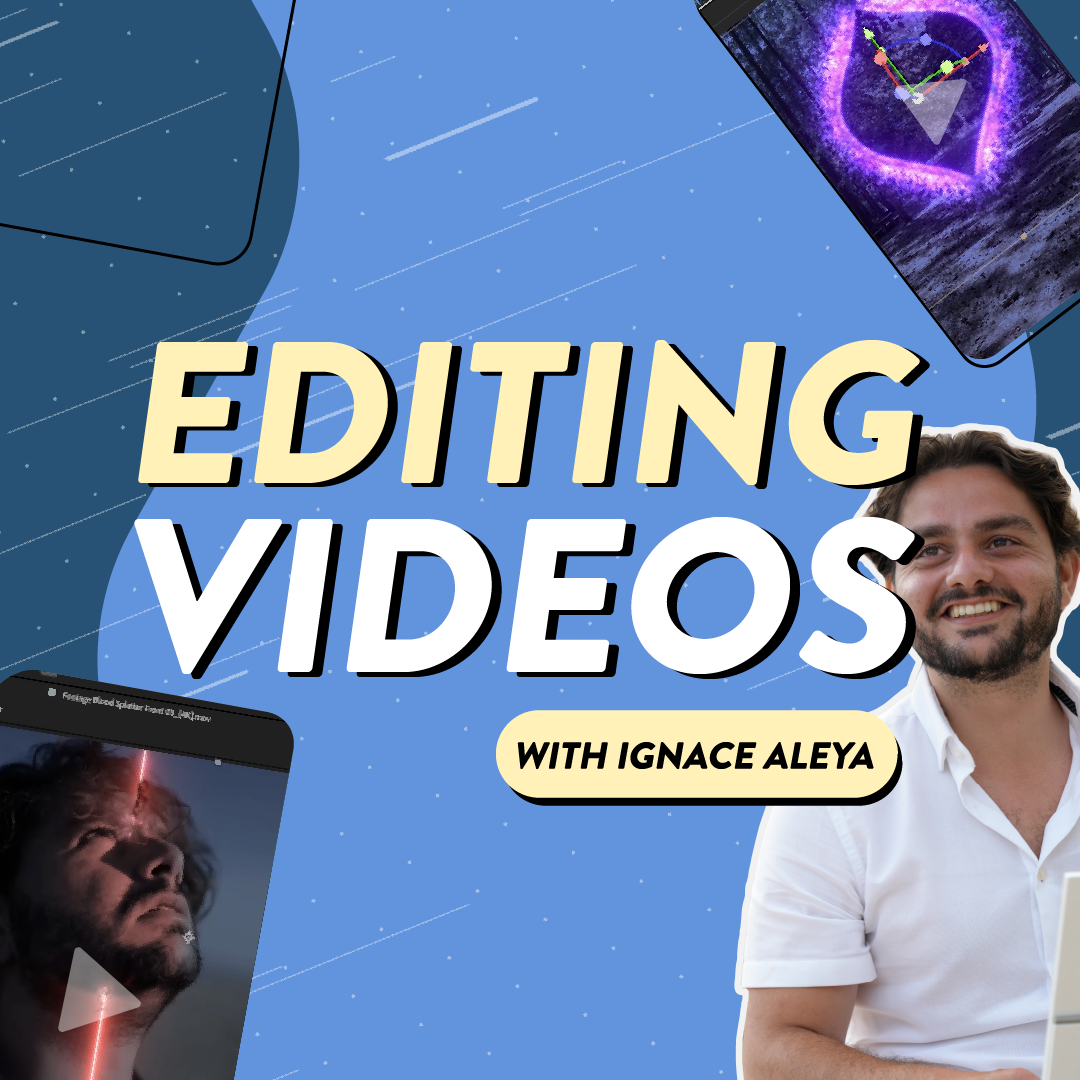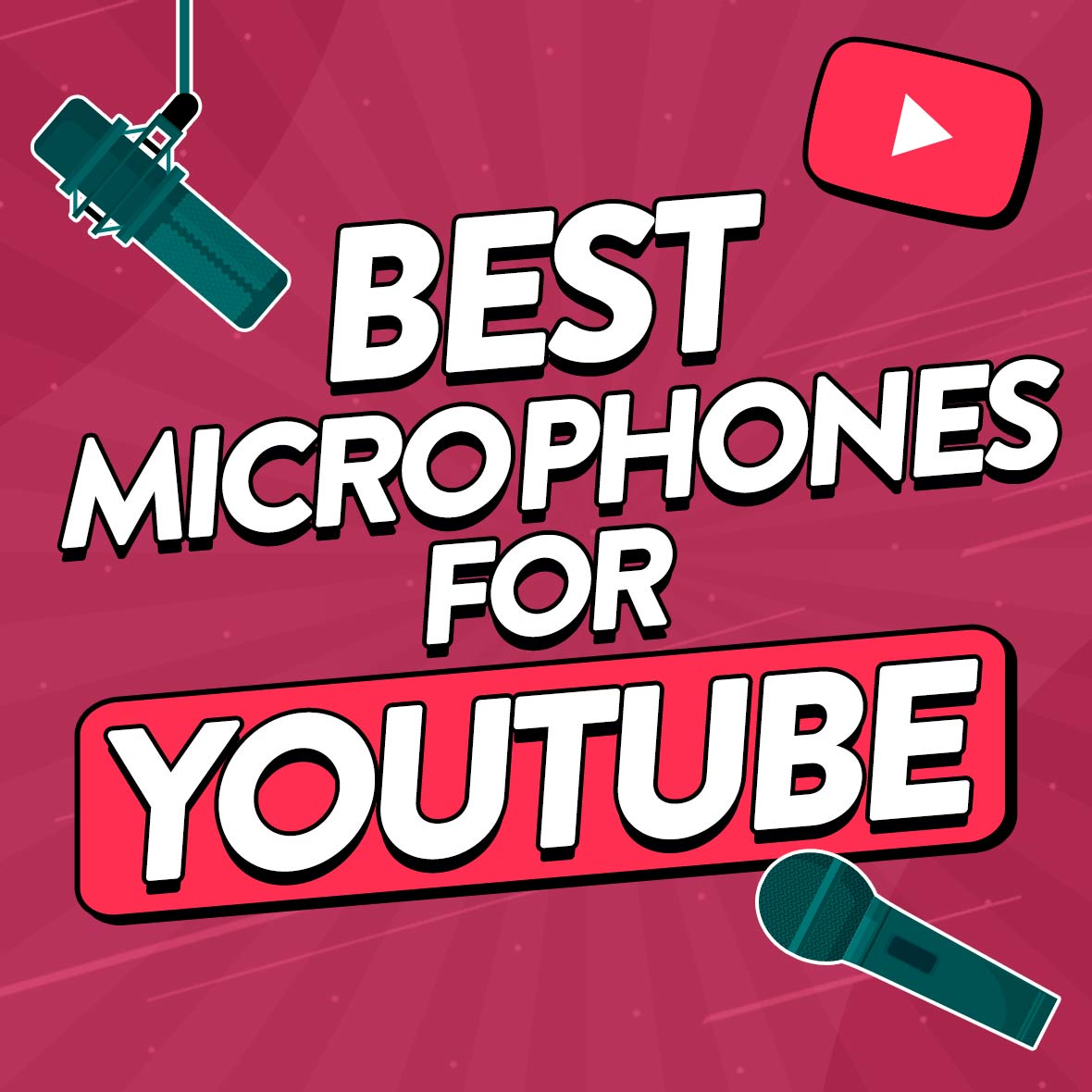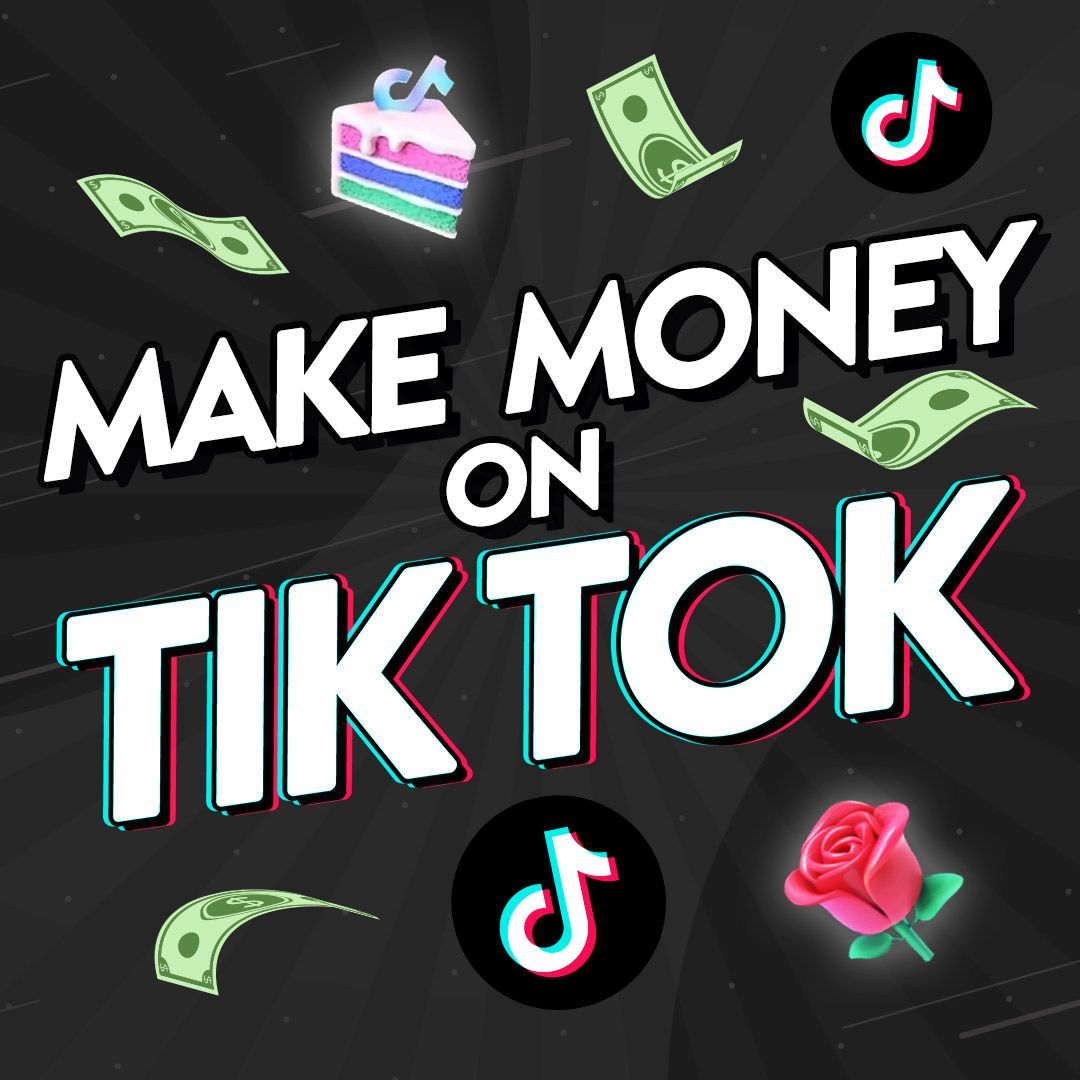Being a creator means hunting down killer music to soundtrack your next YouTube video or making your Twitch stream blow up with explosive sound effects. But finding music that’s safe to use in your content can be tricky if you’re not familiar with what royalty-free music is. Or whether it’s different to copyright-free music.
And getting your head around these terms is important if you want to avoid copyright strikes and demonetization of your videos on YouTube, or even legal action on Twitch. So before you bust out some Beyoncé in the background of your next video, you’ll want to know which tracks are legally safe to use.
We believe you shouldn't have to study copyright law to produce awesome content that sounds good! So we put together this no-nonsense guide to help you find music that’s safe to use in your content, while debunking some of the myths that surround royalty-free music and copyright-free music along the way.
If you’re short on time, you can skip ahead to our quick definitions of royalty-free music and copyright-free music too.
- What is royalty-free music?
- ⚡️ Quick definition: Royalty-free music
- What is copyright-free music?
- ⚡️ Quick definition: Copyright-free music
- How can I avoid copyright claims?
- Music licensing: 101
- Where to find safe music for your content
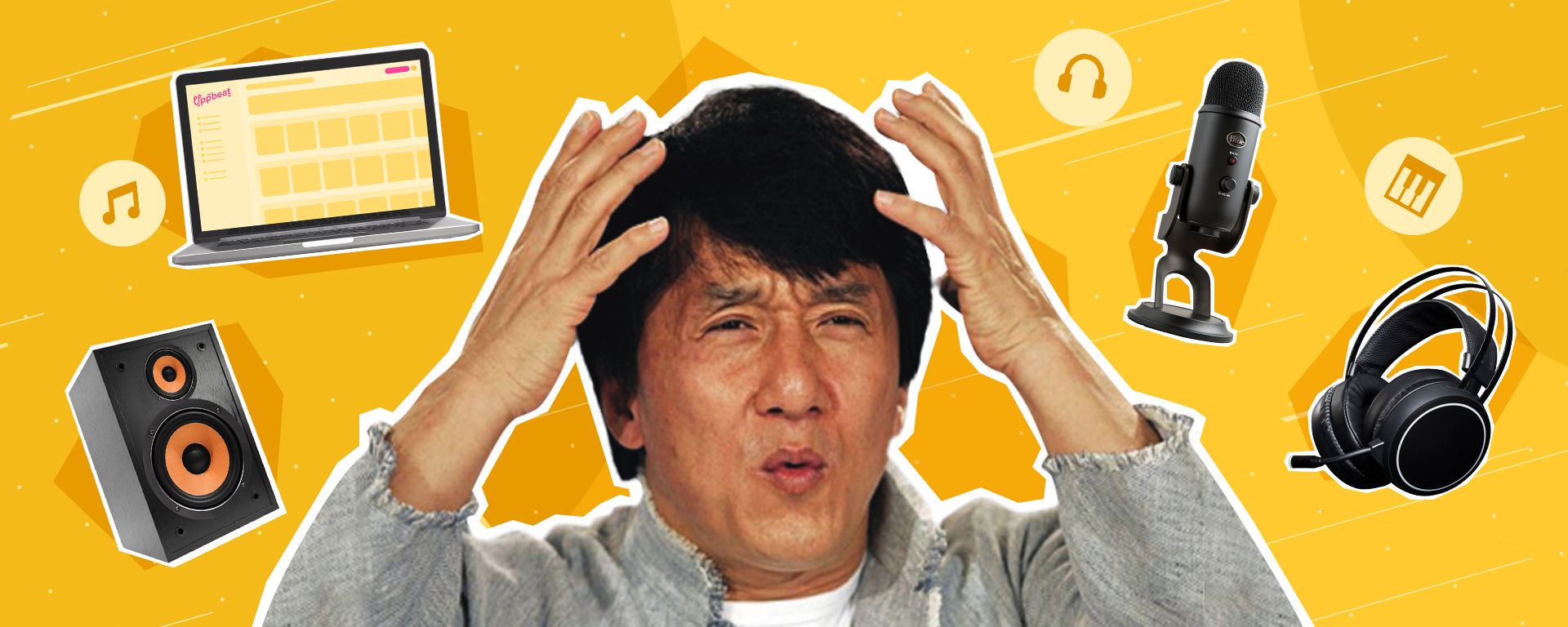
What is royalty-free music?
They’re three words you might come across in the creator space, often used to describe music that’s safe to use in your content. But what does royalty-free music actually mean? To crack this question, first let’s quickly touch on royalties. And no, it’s nothing to do with kings and queens.
What are music royalties?
Music royalties are the ongoing earnings musicians and artists make from people using their music. There are loads of different ways they can earn royalties, including every time their tracks are played publicly.
As artists own the rights to their music, they get paid royalties whenever their tracks are streamed, featured on television, or even played in your local cafe, making royalties one of the main ways in which artists make a living from creating music.
As an example, Spotify paid out over $7 billion to artists in the US alone during 2021! That’s why royalties are as important to little-known bedroom producers as they are to regal artists like Queen or Lorde.
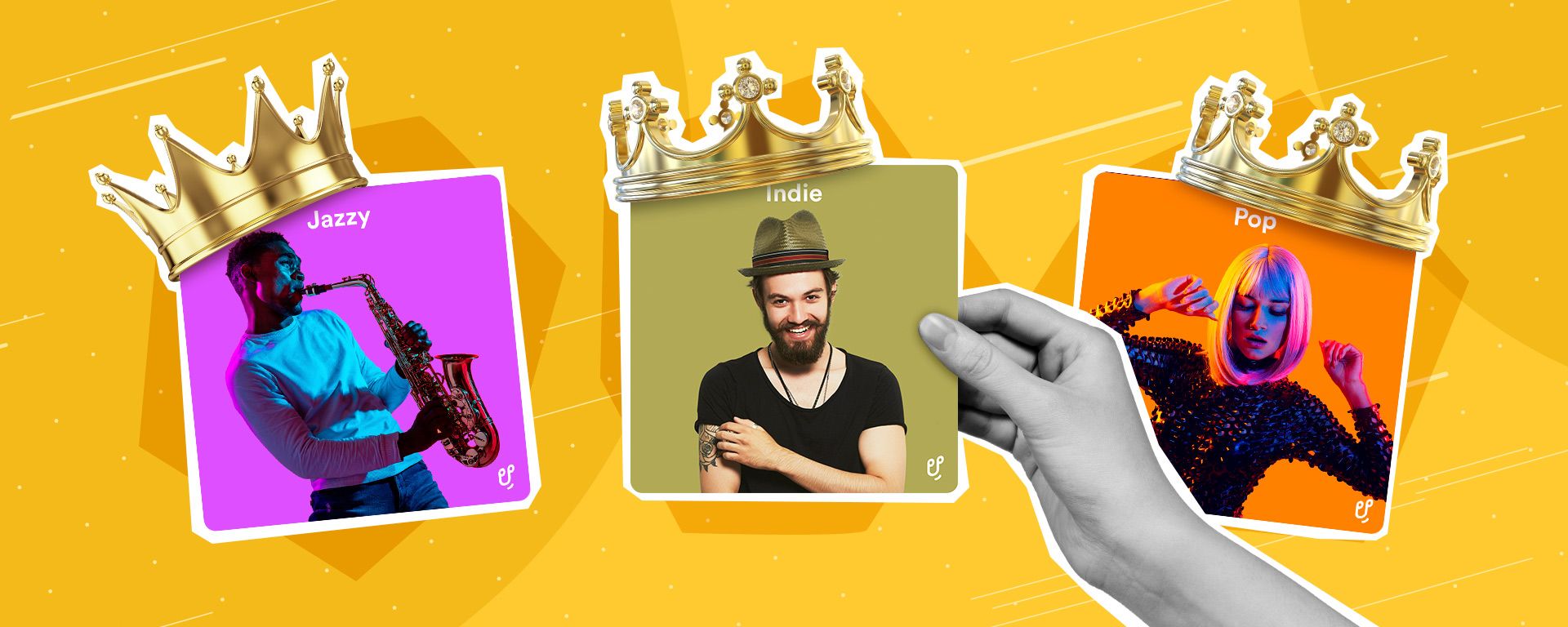
What does royalty-free mean?
Royalty-free music involves paying for a one-off license that allows you to use a track without having to pay the artist anything more than an up-front fee. In essence, by getting a single license, you are then free from paying royalties to the artist.
The term itself can be easily misinterpreted because lots of royalty-free music that’s available to license can also be distributed in other ways that can earn the artists royalties. Just because a track is royalty-free doesn’t mean an artist can’t share it on YouTube Music or Spotify, for example!
Quick definition: Royalty-free music
It’s no wonder that creators turn to royalty-free music for their content given how much easier it is to use than music that isn’t royalty-free! But we still see a lot of myths on the topic, so let’s help answer some of the most frequently asked questions and debunk some royalty-free rumors.
Is royalty-free music always free?
Whether you’re searching for a freebie or willing to spend big bucks, you’ll find royalty-free music for every budget. But, with such a variety of artists and musicians around the world, there's also a wide gulf in the quality of royalty-free music you can use to soundtrack your content.
Here at Uppbeat, we hunt down the best royalty-free music and work with a roster of amazing artists to provide a platform of free music for creators. Making it easier for you to find awesome music you can use in your content.

How do artists earn from royalty-free music?
Royalty-free music simply refers to a single license giving you permission to use a track. This means artists can earn money from selling royalty-free licenses. But they can also earn royalties in other ways from the same songs.
Take for example Uppbeat’s own Alto Moon, whose addictive song Lemonz you can download from our catalog of amazing royalty-free music, but is also earning the artist royalties through streaming platforms too.
There are many artists who are happy to share their music with the world on a royalty-free basis. That’s because music licensing allows them to make money from their work in different ways, including through one-off licenses or subscription services.
Music licenses
A music license gives you permission to use an artist’s music in return for a fee. Music licenses allow artists to earn from their music while also keeping control over how it’s used.
There are several different types of music license depending on how the music is being used. For example, bar owners will pay for a public performance license for the privilege of playing music on a jukebox. Or high-school music teachers would need to shell out for a print license if they planned on reproducing sheet music for end-of-year concerts.
In the world of content creation, if you want to use a specific track in your video, you will need to get a royalty-free license for it first.
Individual music licenses are ideal for one-off projects and less-frequent productions like blockbuster films or the soundtrack for an ad campaign. But what about the content creators who upload and stream multiple new videos every single week?

Music licensing subscriptions
500 hours of video are uploaded to YouTube every single minute and it would take a huge number of music licenses to soundtrack them all! This makes paying for individual music licenses impractical for prolific creators, which is where music licensing subscriptions come in.
For a regular subscription fee, typically monthly or annually, creators can access a library of royalty-free music and download as many tracks as they need for all their different projects. So you could soundtrack a week’s worth of uploads to your YouTube, Instagram, TikTok and Twitch channels in just a matter of clicks – freeing up more of your time to focus on creating!
Here at Uppbeat our free music platform is a bit like Spotify but for creators. We offer free royalty-free music for you to use in your content, but we also have a fully-loaded premium subscription that helps us pay our artists fairly whenever anyone downloads tracks from our platform. Check out our pricing page to compare our free and premium subscriptions and sign up today.
Is royalty-free music lower quality?
You won't necessarily find chart-topping music from the likes of Taylor Swift, Drake or Ed Sheeran on a royalty-free basis, but that doesn't mean that royalty-free music is low quality. Lots of incredible indie artists and up-and-coming musicians are choosing to share their tracks on a royalty-free basis.
Royalty-free music or 'stock music' was born out of the need for ready-made music that could quickly be licensed for the television, film, and radio industries. Taking out the requirement to pay the artist each time they wanted to use a song made the process far simpler, but the music still needed to be of the highest quality so that it could be used in professional productions.
To get an idea of the amazing royalty-free music that’s out there, simply head to Uppbeat’s catalog. Check out our incredible roster of artists whose music has been featured in award-winning films, by world-leading brands, and in content from social media superstars.
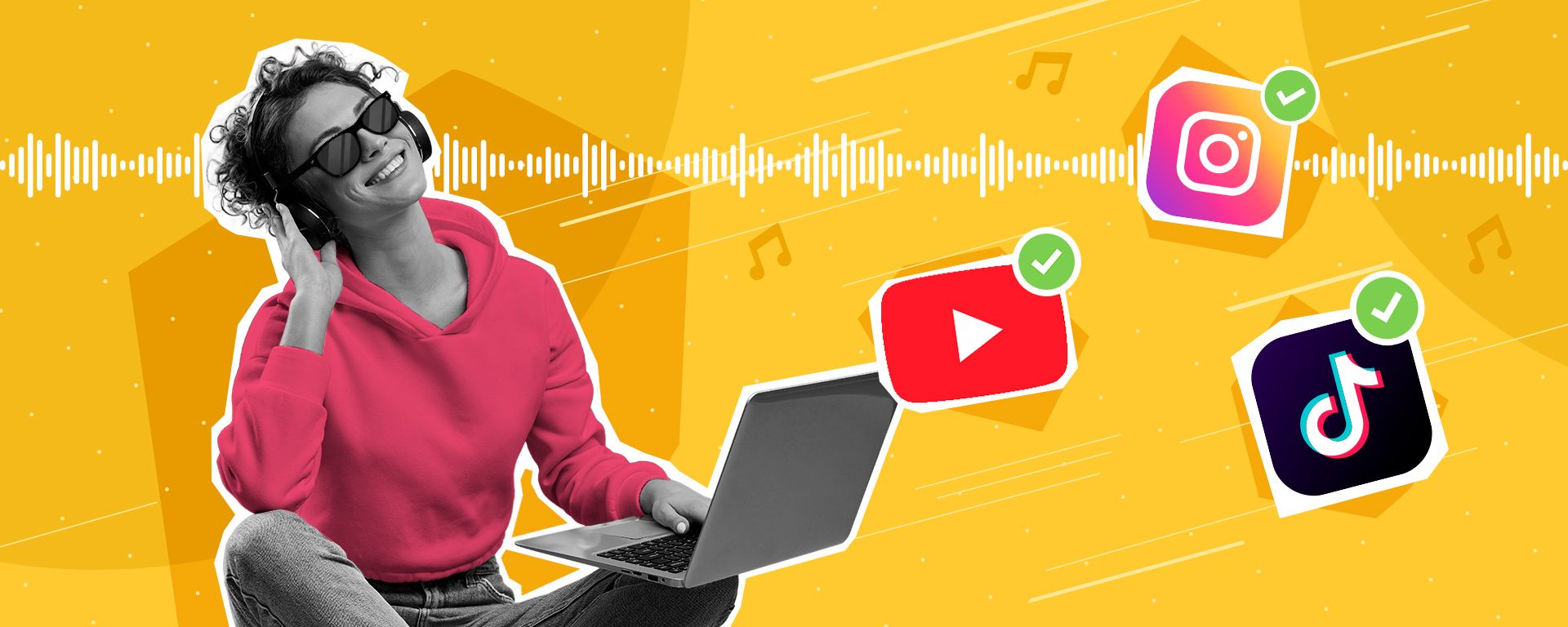
What is copyright-free music?
In the world of content creation, as well as royalty-free music – i.e. music that’s free from ongoing royalties – you’ll also come across copyright-free music, or no-copyright music.
The clue is in the name, right? You’d think copyright-free music is music that’s free from copyright but it’s not quite that simple. Almost all music is protected by music copyright!
What is music copyright?
Artists own the rights to their music and those rights are protected by music copyright law. That’s why you can’t simply soundtrack your gardening tutorial with Gangsta’s Paradise. Coolio owns the rights to the music and using it without his permission would be like stealing from a bona fide rap legend.
But it’s not just Coolio you’d need to be concerned about. Music copyright protects the rights of publishers and record labels too. That’s because most tracks have two types of music rights protected by copyright law – one for the composition and one for the recording.
Composition rights
The composition is the creation of the song itself. As soon as an artist has written a melody, the beat, or any other part of the song, they own rights to that musical composition which are often managed by a publisher.
Even ‘Happy Birthday’ – arguably the most famous melody in history – has been the subject of epic legal battles and you’ll rarely see it used in TV and film due to potential copyright disputes over ownership.
Recording rights
Where artists and their publisher will own and manage the rights to compositions, record labels typically own the rights to their recordings. For example, Geffen Records is the label behind some of the world’s most famous recordings from artists such as Elton John and Nirvana, through to Snoop Dogg and Olivia Rodrigo. Before you can use any of these recordings in your content, Geffen Records would need to grant their seal of approval.
These days it’s becoming increasingly common for artists to record their own music and retain complete ownership and control of both their composition and recording rights, or ‘masters’.
For example, Jay-Z owns the recording rights to his tracks after setting up his own Roc Nation label and Taylor Swift gained international attention for her decision to retain masters to all of her future albums following the expiration of a previous record deal in 2018.
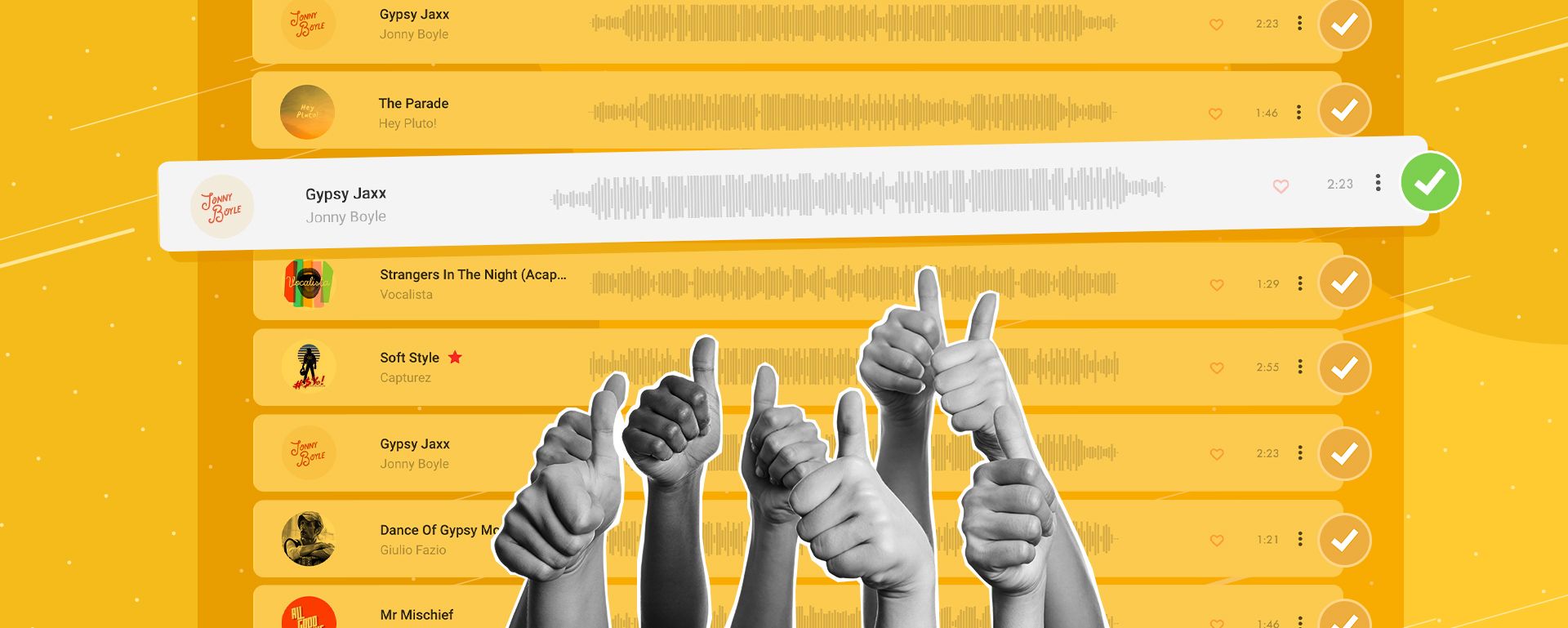
So what does copyright-free mean?
The truth is that copyright-free music is commonly used as a term to describe music that's free from copyright issues. This differs from copyright-free music in the literal sense - i.e. free from music copyright - which would mean that the rights to the music are no longer protected and you'd be able to use it without any restrictions.
It’s good to understand the difference between these two meanings when searching for copyright-free music you can use. There are tracks out there that are copyright-free in the truest sense, the most common example being music that’s in the public domain.
What is the public domain?
When musicians, artists, writers or any other creators give up the rights to their intellectual property, it enters what's known as the public domain. This means you can use public domain music or any other creative material without any restrictions or royalties.
In the world of music, a composition enters the public domain either because its author put it there, it was created before copyright law existed, or because its copyright has expired. That means the complete works of classical composers like Beethoven, Bach and Mozart are all in the public domain.
For content creators in need of music, the good news is the public domain is full of freebies. But be aware that finding great tracks is like looking for a needle in a haystack and can be risky.
Why search for copyright-free music?
At this stage, you might be wondering why so many creators are searching for copyright-free music if pretty much all music is copyrighted!
That’s where the more commonly accepted use of the term copyright-free music comes into play, meaning music that is free from copyright issues. It’s an increasingly popular phrase that reflects the growing need for creators to find music they can safely use on the likes of YouTube, Twitch and TikTok.
And with over 700 million copyright claims in the first half of 2021 on YouTube alone, you can see why creators want to find tracks that’ll keep them clear of claims, strikes, or even the possibility of losing their channels.
With this in mind, more often than not the copyright-free music you might download from a third-party website or YouTube channel will still be protected by copyright. But the artist will have provided permission to use the music, so you should be free of any copyright issues.
Quick definition: Copyright-free music
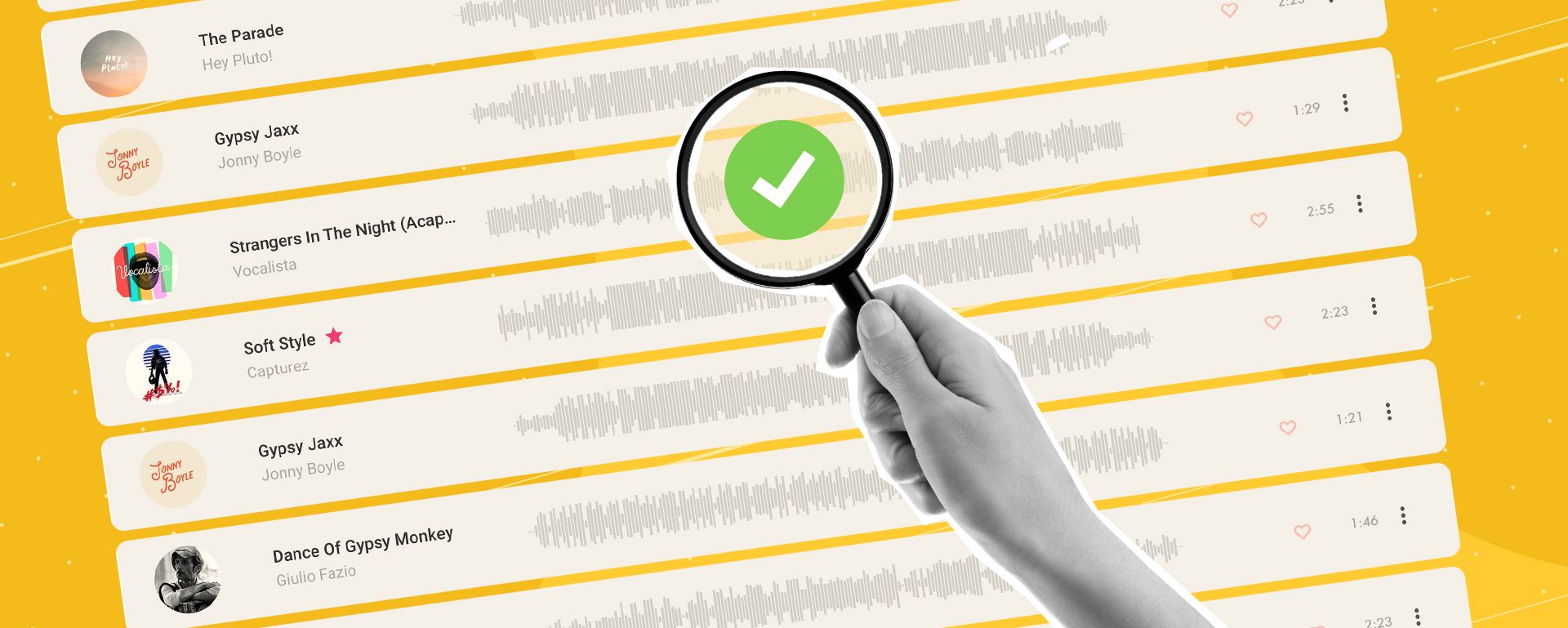
How can I avoid copyright claims?
Copyright claims are fairly black and white. Consider for a moment how powerful Shazam is at identifying music; let it listen and it can tell apart Beyoncé and Busta Rhymes in a heartbeat.
That's because tracks these days are registered with clever fingerprinting systems. For example, YouTube uses a system called Content ID that trawls the 720,000 hours of videos uploaded every day for copyrighted music.
So if you were to drop some Queen Bey into the soundtrack for your video, the chances of it avoiding detection are slim to none. Whether you receive a copyright claim or not really comes down to whether you have permission to use the music.
Here at Uppbeat, all of our music is registered with Content ID. So when you download any track from our platform and display your Uppbeat Credit in your video’s description, we can tell YouTube that you have permission to use the music and you won't receive any copyright issues.

Music licensing: 101
You’re now a music copyright mastermind, ready to recognize your royalty-free music from your copyright-free. But you may still come across some other terms and technical lingo that may be less familiar. So here’s your very own cheat sheet with quick summaries for some other music terms that may crop up.
What is ‘rights-managed’ music?
Rights-managed is a type of music licensing which specifies how you can use an artist’s music, such as how long you can use tracks for and which platforms you can post them on.
Usually, rights-managed music can only be used on one project at a time, with license fees varying based on the size of the project. For example, the amount you’d pay to use a track in a student film would be very different than if you were creating a Super Bowl ad!
Services offering rights-managed music will often work closely with artists and record labels in order to offer music licenses on their behalf, hence the term 'rights-managed'.
In contrast, royalty-free music offers an easier and more flexible solution for licensing music, although it doesn’t always mean you can use the music however you want.
Royalty-free licenses can have simpler pricing when compared to rights-managed music and usually include their own rules, such as not allowing tracks to be used in offensive content.

What does ‘public performance’ mean?
Public performance refers to any playing of a piece of music in public and isn’t specifically to do with artists performing their tracks live. Any public performance of music requires permission, whether it’s played in a local cafe or broadcast on TV or radio, although it’s usually the platform or venue that is responsible for getting permission rather than the person creating the content.
If a customer in your store or a visitor attending your event can hear copyrighted music, you'll likely need to pay for a public performance license from a Performance Rights Organization, who will use your license fee to pay royalties to the artists.
What are Performance Rights Organizations?
Performance Rights Organizations (PRO) act as the middle-man between artists or their representatives and anyone playing their music publicly, including businesses, venues and broadcasters.
It’s the PRO’s job to license the music out to people, measuring the number of times each track is played publicly and then paying the funds back to the artists as performance royalties.
This saves artists and their record labels from the mammoth task of keeping track of everywhere their music is performed publicly, and helps simplify the process by which businesses and broadcasters can license music.
Any time you hear your favorite artist’s music on a big TV show or ad campaign, the PRO will have collected money from that track being licensed and paid royalties back to the musician.
But what happens if their song is being used on the other side of the world? Well, there’s usually a separate PRO for each country and they all work together to make sure artists are paid each and every time their music is used.

What is a stock music library?
Stock Music generally relates to music that is written specifically to be used in videos and other content. Tracks can be selected from a library and downloaded by purchasing a simple, inexpensive license.
Often stock music is associated with a particular style of background music, but it actually covers a wide variety of genres from professional artists.
There are also companies that own entire catalogs of stock music, usually after buying the tracks from the original composers in order to license them out.
Services like Uppbeat offer the same convenience of stock music, but bring the benefit of working with a curated catalog of real artists, songwriters and producers. We also pay the musicians fairly every time their tracks are used!
What is ‘pre-cleared’ music?
Pre-cleared music simply means the artists have already agreed for licenses to be made available for creators to buy and use the music.
Royalty-free music sites offer pre-cleared music to save you from having to ask permission to use a track and negotiate on pricing, which is how the traditional licensing process works.
To make your life simple, all of Uppbeat’s music is pre-cleared with our artists so that you know exactly how you can use their tracks. It’s all set out in our user agreement!
Creative Commons licenses
A lot of artists believe in the power of collaboration! Many will choose to share their music via Creative Commons licenses, which freely give people permission to use their tracks while still retaining the rights to their work.
There are different types of Creative Commons (CC) licenses that specify what you can and can’t do with the artist’s intellectual property. For example, an artist may wish to specify a Creative Commons license that restricts the use of their music for commercial projects, or prevents people from using CC music for samples or remixing.
Or, an artist could choose to make their music available with a CC0 license, meaning there are absolutely no restrictions whatsoever. This effectively puts their music in the public domain.
Creative Commons licenses don’t just apply to music either. Writers and singers, videographers and poets can all share their intellectual property with complete strangers via the Creative Commons.
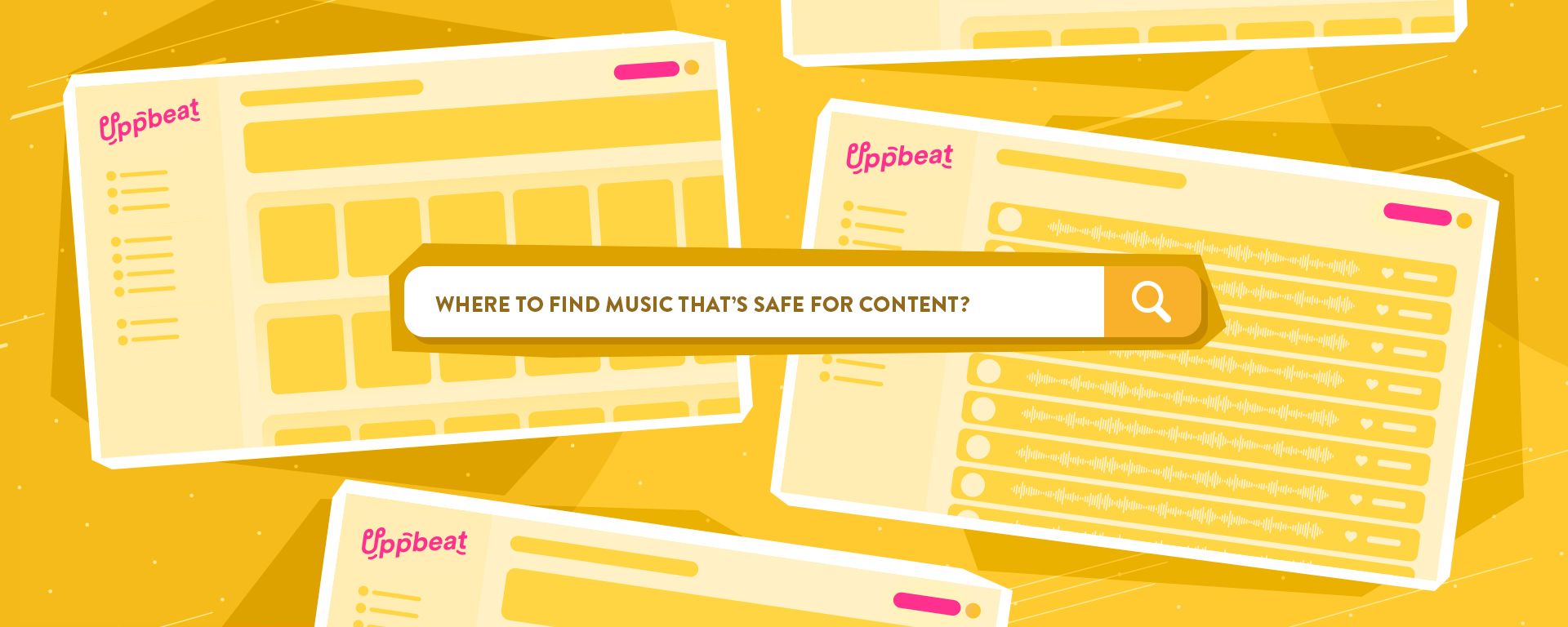
Where to find music that’s safe for your content
Now you’ve mastered the difference between royalty-free music and copyright-free music, hopefully you’ll agree that searching for music to license is actually quite straightforward.
For creators looking to elevate their content with awesome music, the important thing to remember is to get permission for your soundtrack so you don’t get hit with copyright issues.
This is as simple as licensing royalty-free music that you can use without paying artist royalties, or finding copyright-free music an artist has given permission to use without any copyright issues.
Here at Uppbeat, we’ve curated a catalog of world-class artists to offer the very best royalty-free music which you can download for free and with zero copyright issues. Get started with a free account and download a limited number of free tracks every single month!
Don’t forget to keep checking the Uppbeat blog for more tips on how to get the most out of the platform, guides on how to find the perfect soundtrack for your project, and other great content for creators.
Everything you need to know about music licensing
Want to dive deeper into the world of music licensing and learn about how to find tracks you can safely use in your videos? Check out our related guides on all things music licensing:
- What is Royalty-free Music? And How is Copyright-free Music Different?
- How Uppbeat’s Music Licenses Work
- What Are Music Royalties? And How Do They Work In 2025?
- Music Licensing Explained: The 7 Different Types of Music Licenses for your Project
- How to Find Out if a Song is Copyrighted: Safely Using Music in Videos
- Understanding Music Copyright: How to Safely Use Music in Your Videos
- What does DMCA mean? How to protect your content from DMCA copyright takedowns
- What is Public Domain Music? Should You Use It?
- What is a Creative Commons License?

